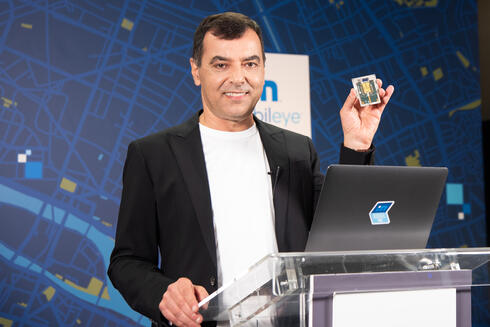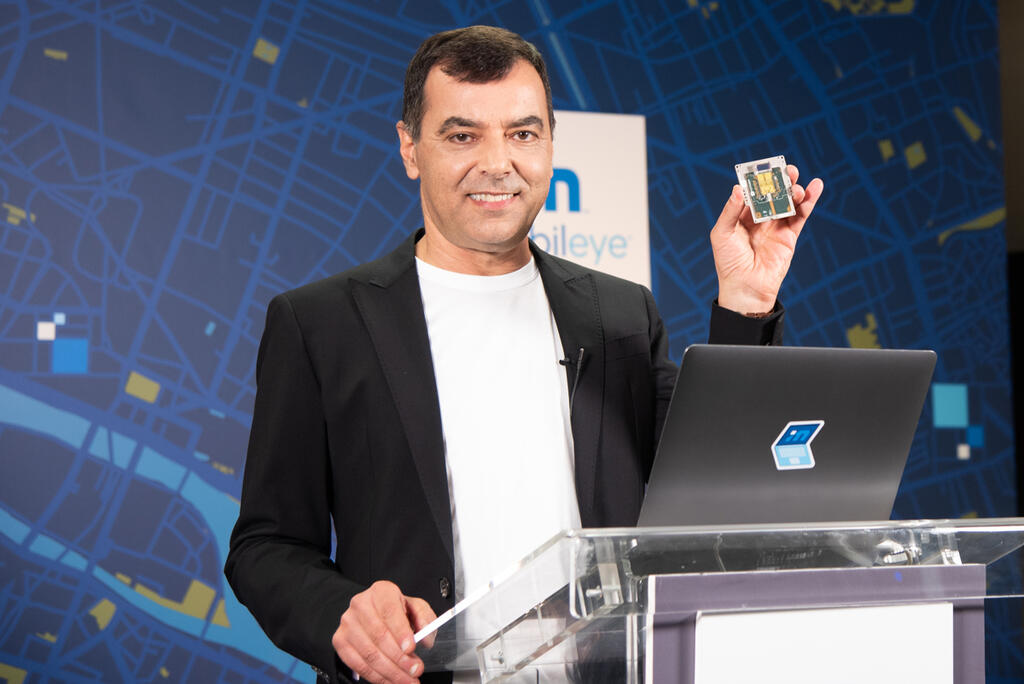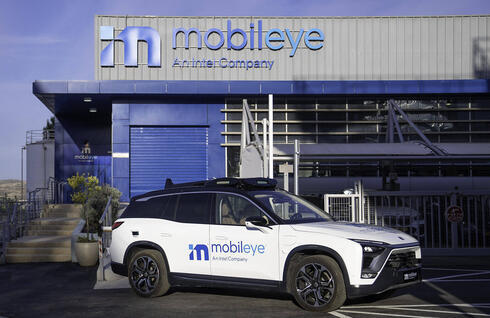
What's the real reason Mobileye's shares plummeted by 25%?
Was the dramatic drop in the stock of the autonomous vehicle technology company a transient setback or a precursor to graver issues?
To what extent is the fall of Mobileye's shares on Thursday a one-off event? This is the central question surrounding Amnon Shashua's autonomous vehicle technology company after it stunned investors on Wall Street last week. Mobileye, which traded on Wednesday close to a historic high of about $35 billion, plunged 25% on Thursday, shedding $8 billion from its value following a severe profit warning for the first quarter of 2024, and for the entire year. Mobileye explained the expected 50% drop in revenues for the current quarter as the result of excess inventory accumulated by its customers—car manufacturers and car component manufacturers. The company, considered a pioneer in the autonomous vehicle market, currently produces chip-based systems that assist the driver and make driving akin to airplane autopilot.
As the dream of the fully autonomous vehicle drifted further into the distant future over recent years, the revenues of the Israeli company grew. In 2017, when it was sold to Intel, it sold several million EyeQ systems to assist drivers; in 2019, it sold 17.5 million systems, and in 2023, sales had already jumped to 37 million units. Now, Mobileye states that customers have 6-7 million excess systems in stock—something that will make 2024 the first year in the company's history without growth.
Excess inventory is indeed a reasonable explanation for a company that operates in the chip market, characterized by a cycle that moves along the axis of component shortages, rapid stocking, and then a sharp drop in demand as a result of excess inventory. In the auto market, the issue is even more painful since the coronavirus pandemic damaged the supply chains, creating a shortage of vehicles and a drop in income.
However, there is something unusual in the depth of the damage that Mobileye is expected to suffer, and also in the timing of its announcement. Profit warnings are commonplace on Wall Street, but a 50% miss in revenue and a severe hit to profitability are extremely rare. In the first quarter of 2023, Mobileye recorded revenues of $458 million, but it is expecting revenues in the current quarter to amount to approximately $230 million. This is a complete collapse compared to revenues of $634-638 million in the last quarter of 2023. As a result of the predicted fall in the first quarter and stagnation in the following quarters, Mobileye updated the entire annual forecast downwards, and it now expects revenues of $1.83-1.96 billion in 2024 as a whole. This is about a billion dollars less than the forecasts of analysts and the company itself.
Against this backdrop, Mobileye anticipates an operating loss of $242-257 million in the first quarter, and even excluding accounting items, it will record a loss of $65-80 million. This expected loss in the first quarter is higher than the loss in the whole of 2023. In the summary of 2024 as a whole, Mobileye is expected to lose $378-468 million. Even looking at numbers that exclude accounting items, the net profit is expected to be cut in half from $651 million last year to $299 million in 2024.
The market expects public companies, especially those that sell in the billions of dollars a year, to show high planning ability and complete transparency. Part of the fall of Mobileye's stock last Thursday, in a huge turnover, stems from the disappointment from its management, which failed to recognize the negative trend in time (a less likely scenario) or did not report it in time (the more likely scenario). It will not be a surprise to soon see investors organize lawsuits against Mobileye, following the gap between what was expected and what ultimately unfolded.
The timing of the announcement was also surprising, as this week the electronics and chip industry will gather in Las Vegas for the annual CES exhibition, where technology innovations are presented. In the last decade, it has become the most important event in the autonomous vehicle industry, of which Shashua is one of its stars and main tone-setters.
Analysts, likely in continuous contact with Mobileye's management, expressed great optimism for the exhibition, which enhances the surprise. Deutsche Bank, for example, issued a warm recommendation on the stock the day before the profit warning and named Mobileye as the strongest player in its sector. Deutsche still insisted on Friday that this was a "convenient entry point to the stock" but drastically lowered the target price. Analysts at Bank of America cut the recommendation on Mobileye and essentially recommended to sell the stock—a rather unusual event on Wall Street. Bank of America was part of Mobileye's October 2022 IPO when it returned to being a public company after a five-year hiatus during which it was fully owned by Intel, which bought it for $15 billion in 2017.
The big concern now is that this is not a one-off event but a clear sign of increased competition in the company's market. As the sector matured, and the direction changed from developing a fully autonomous vehicle to automated driving, chip giants began entering the fray, notably Nvidia and Qualcomm, as well as the Chinese Horizon Robotics. Shashua wanted to free himself from Intel's grip and reissue the company to raise the company’s profile and convey strength against competitors, but now it may be backfiring. "In the chip industry, you have to receive orders six months in advance, and at least three months in advance, to move the entire process through to the final product," says a senior official in the autonomous vehicle industry. "If Mobileye is not receiving orders now, it means that some customers do not plan to renew their contracts with it even after companies no longer have excess inventory."
A large part of Mobileye's growth originates in the Chinese market, where it has contracts with companies such as Zeekr and Polestar. This is a very vibrant market, with a jump of more than 100% in the supply of vehicles with driver assistance systems (ADAS) in the first half of 2023. The number of models that include such systems has already passed 50, twice as much as in 2022, according to research companies. Contrary to this trend, Mobileye actually lowered the forecast even a year ago, at the beginning of 2023, when it blamed the Chinese market for the slowdown. In fact, even throughout the first half of 2023, Mobileye has already suffered from a slowdown, and the annual numbers it presented last Thursday were also lower than originally expected.
The possible explanation for the company's weakness in China is not necessarily the weakness of the market but that Mobileye is losing the competition for it. According to data from the Gaogong Intelligent Automobile Research Institute, Nvidia and Horizon Robotics already share 80% of the Chinese luxury car market—Nvidia owns 52.57% and Horizon 30.71%. The remaining 20% is shared by Mobileye, Texas Instruments, and the Chinese Huawei. The latest announcements by European manufacturers also indicate that they are choosing Mobileye's competitors. Mercedes, Volvo, and Jaguar signed with Nvidia, and BMW went to Qualcomm. Although the autonomous vehicle market is not the main activity of these two giants, it has become very strategic, and therefore they are investing efforts in it. This is also bad news for Intel, which admittedly recognized the importance of this market early on and acquired Mobileye. Still, today the Israeli company is important to it mainly as a conduit for cash, and it concentrates most of its efforts on the artificial intelligence market, where it is once again left behind. To close the gap opened by Nvidia and even AMD, Intel needs cash, and Mobileye was supposed to provide that.
Intel planned to issue the company at a value of $50 billion, but in practice settled for a third of that. But Mobileye's stock soared, and Intel was able to sell a large block of shares last summer, bringing $1.5 billion into its coffers, in addition to the $800 million it received in the October IPO. The latest development in Mobileye harms Intel's plans to continue reducing the holding. Analysts at Bank of America write that they now have difficulty assessing Mobileye's growth potential and reduce the expected revenue multiplier to only 5.5 on sales in 2025, almost half of the previous sales multiplier. The new sales multiplier brings Mobileye back to the "magic number" of a $15-16 billion valuation, which is what it received from Intel in 2017 and at which it was issued in 2022.















